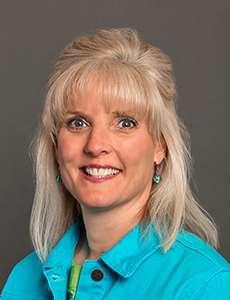Virtual Self-Care and Human Organizational Performance Feature In National Ergo Conf. Session

The National Ergonomics Conference is all-digital this year, but the sessions will still contain the top-notch content health and safety professionals expect.
A dual presentation on the afternoon of October 20th will feature Kevin Lombardo, President and CEO of DORN Companies, discussing technology to build a safer future for workers, and Lisa Brooks, Vice President of ORCHSE Strategies, LLC leading a dialogue introducing human and organizational performance (HOP).
For Lombardo, who leads the strategy development and expansion plans for the company and oversees DORN’s focus on developing innovative solutions for pain mitigation, the technologies discussed will primarily focus on those concerns.
“In total we’ll cover seven technologies, from AI to exoskeletons and wearables,” he explained. “All of them are ergonomically driven.”
In total, he’ll walk attendees through artificial intelligence, exoskeletons, wearables, going virtual with ergonomic assessments (mainly office ergonomic assessments), technology for desktop ergonomic assessments and self-correction technology, and then lastly, live virtual mobility and conditioning training, live virtual self-care assessment, and fatigue identification software.
Fatigue Identification Software: Increasingly Relevant
The fatigue identification software is especially relevant in the COVID era. “Pre-COVID, we were onsite doing deep tissue manipulation to help alleviate pain and discomfort,” Lombardo said.

Kevin Lombardo, president and CEO, DORN Companies
“With COVID, we were asked to leave a lot of sites and so we came up with virtual self-care, teaching people how to sit better at a computer, and giving people tools to help with self-care working from home.”
Fatigue is of course more complicated than physical discomfort, and Lombardo also has expertise in this area. “Fatigue is something that is still probably 65 to 70 percent academic versus practical,” he explained.
“There’s a third party software that we’re a reseller of that is an identification software, more gamified, and so you go in in the morning and it asks you the difference between two pictures. If you’re cognitively not able to meet 80 percent of your baseline, it just triggers a notification. Some companies have even replaced drug testing with this, as an impairment identification tool.”
The timing couldn’t be more apt. Research by PwC has predicted that nationwide investment in workplace safety technology could drive an increase of up to $15.7 trillion in economic value by 2030.
Another PwC research piece titled Will Robots Really Steal Our Jobs? further contextualizes the conversation. PwC found that the third “wave” of automation in the mid-2030s will include nearly half of low education jobs, delineating that type of automation as “automation of physical labour and manual dexterity, and problem solving in dynamic real-world situations that require responsive actions, such as in transport and construction.”
As threatening as that may sound, Lombardo emphasizes the light at the end of the tunnel.
Overall, Lombardo hopes attendees recognize that humans will always be a part of the industrial landscape, and deserve attention as such.
“Robots are cool and in some places they have replaced people, but when you start talking about the type of technologies we’re talking about, we’re trying to augment what people are doing to make it less stressful, less impactful on their bodies. You’re empowering people to be able to do their jobs with less stress and less wear and tear. There’s still an injury every seven seconds in this world, and these tools help combat that,” he said.
HOP: Everything You Need to Know

Lisa Brooks, vice president, ORCHSE Strategies, LLC
Beyond individual technologies, Lisa Brooks, Vice President of ORCHSE Strategies, LLC, will teach attendees about a cutting edge strategy in safety and health called Organizational and Human Performance (HOP). Brooks, who has more than 28 years of experience in health, safety and ergonomics, sees HOP as an untapped resource for ergonomists, who she believes have not been leveraged as much as possible in the strategy’s discussion.
“Human and Organizational Performance is really part of a renaissance happening in health and safety right now, but it’s even bigger than that,” Brooks said.
“It’s helping companies in operational excellence, employee engagement, quality and production. In my experience over ten years, the ergonomics and human factors community has not been well represented.”
According to a 2017 paper published by Los Alamos National Laboratory for the National Nuclear Security Administration of the U.S. Department of Energy, HOP can be described as “cynical optimism,” and they made six recommendations using HOP:
• Empower competent staff
• Seek to learn
• Change the conversation – what is working/must go right
• Ensure what must go right with multiple defenses
• Utilize rapid prototyping
• Exercise cynical optimism and healthy uneasiness
Brooks, who believes that HOP is applicable far beyond the sector of nuclear energy, sees the movement as “human factors and ergonomics combined with organizational psychology,” adding that, “it’s an operating philosophy that recognizes that human error is part of the human condition and that how we design our systems and our processes really has huge impacts on the success of our employees. That’s really right up the alley of ergonomists and human factors engineers,” she said.
An additional peer reviewed article on HOP and its combination with Behavior Based Safety (BBS) from the October 2018 edition of Professional Safety explained HOP’s ultimate practice as follows:
When employees are injured, managers should make it clear that their primary concerns are that the person is okay, whether systems are now safe for operations and what steps can be taken to prevent the event in the future. Without this emphasis, employees may believe that management is simply trying to determine who is to blame for the incident, when normal operations can resume and whether they must classify the incident as a recordable injury.
Noting that ergonomics is only just starting to be valued on an enterprise-wide basis as the engineering discipline it truly is, Brooks hopes to not just to introduce HOP, but also to issue a call to action for ergonomists.
“My goal with the presentation is to make sure everyone understands what HOP is, understands what it could be and how to leverage it, and the five core principles of HOP. And in the end, I challenge attendees to ask what their organizations are doing to get involved and if they aren’t doing anything, to get themselves involved in these initiatives.”
Registration for the virtual National Ergonomics Conference is available here. &










